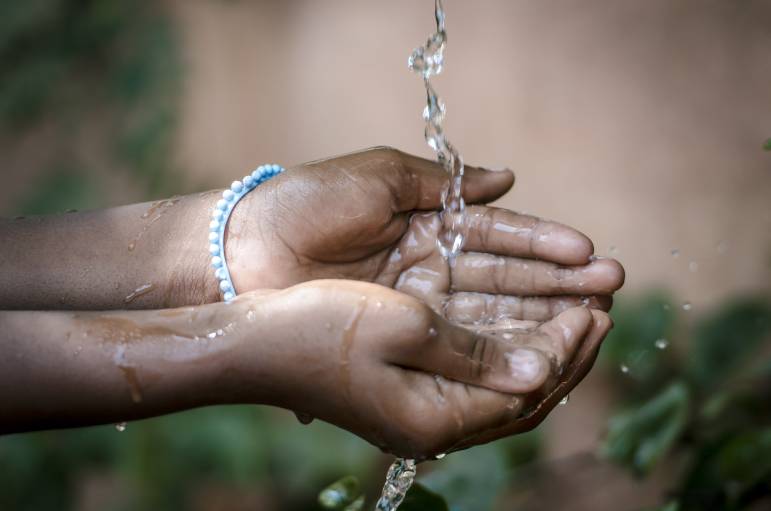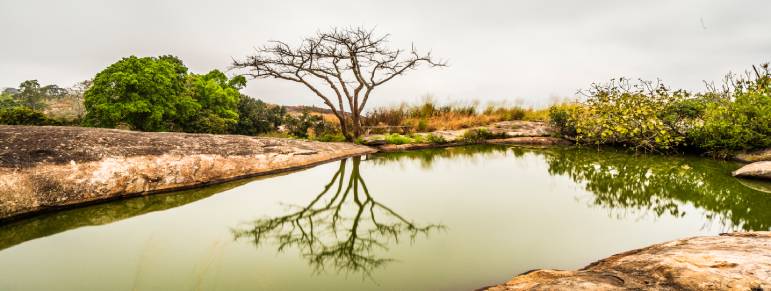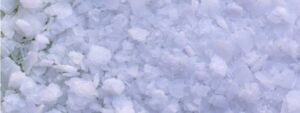Nigeria, located in the tropical zone of West Africa, has a varied orography with thick mangrove swamps, tropical rainforests and almost desert areas. Thus, depending on the area of the country where we are, access to drinking water presents quite different casuistry.
What water resources does Nigeria have?
As natural water sources, the country has a network of rivers and streams which, in the case of the smaller ones, may be seasonal, and four main surface water accounts: the Niger Basin, the Lake Chad Basin, the southwestern littoral basins and the southeastern littoral basins. In addition, it has extensive groundwater resources, located in eight hydrological zones.
However, natural water resources do not always translate into regular and sufficient access to safe drinking water for the population. In fact, the WHO states that “at least 2 billion people in the world use a drinking water source contaminated with faeces. Microbial contamination of water for these purposes as a result of faecal contamination poses the greatest risk in terms of sanitation and transmission of diseases such as diarrhea, cholera, dysentery, typhoid fever and polio.”
And in 2018, the Government of Nigeria declared on emergency the Water, Sanitation and Hygiene sector (WASH), as it was estimated that approximately 60 million people were living without access to basic drinking water due to a combination of inadequate infrastructure, lack of human capital, underinvestment, and a poor policy environment.
Thus, it is not enough to have natural water resources, but water treatment systems are needed to make water potable for people to use and consume safely, as well as for use in agriculture or in industrial sectors such as food and pharmaceuticals.
Water treatment initiatives in Nigeria

Fortunately, in recent years the Nigerian government has initiated a number of projects to improve access to safe drinking water and sanitation and hygiene services. In fact, the National Action Plan aims precisely at Water Revitalization in the WASH sector. This plan consists of three phases
- An 18-month emergency plan
- A 5-year recovery plan
- A 13-year revitalization strategy
As part of the National Action Plan, in 2020 The World Bank approved the Nigeria Sustainable Urban and Rural Water Supply, Sanitation and Hygiene (SURWASH) Program. This program has a $700 million credit from the International Development Association (IDA), and will provide 6 million people with basic drinking water services and 1.4 million people with access to improved sanitation services, in addition to improved water, sanitation, schools and health centers.
In addition, a nationwide campaign, “Clean Nigeria: Use the Toilets“, was launched to address the sanitation crisis and achieve an open defecation-free Nigeria by 2025. Let us recall that the WHO indicates that contamination by feces is one of the most frequent problems in the water sources used by millions of people around the world.
We could say that Nigeria has natural water resources that, with proper treatment, could be sources of drinking water for the population, thanks to treatments with reverse osmosis, ultrafiltration, desalination, etc…
Of course, these are large-scale projects that require not only the involvement of the government, but also investment in the construction and maintenance of these water treatment systems and facilities, as well as in the necessary resources required by these drinking water treatment plants, such as access to sodium hypochlorite, which is essential for disinfecting and treating contaminated water.
Sources
- Clean Nigeria Campaign, WaterAid
- Drinking Water, OMS
- Improving Water Supply, Sanitation and Hygiene Services in Nigeria, The World Bank
- National PolicyWater Resources, Nigeria Government
- Nearly one third of Nigerian children do not have enough water to meet their daily needs, UNICEF
- Nigeria: Ensuring Water, Sanitation and Hygiene for All, The World Bank
- Nigeria Overview, Global Waters
- Nigeria’s National Action Plan, WaterAid





